DIGITAL CAMERA IMAGE NOISE, PART 2
Knowing the noise characteristics of a digital camera can help avoid any image quality surprises. The following sections discuss how image noise varies according to color or "chroma," luminance, intensity and size or spatial frequency. Examples of noise variation based on ISO and color channel are also shown for three different digital cameras.
CHARACTERISTICS
Noise not only changes depending on exposure setting and camera model, but it can also vary within an individual image. For digital cameras, darker regions will contain more noise than the brighter regions; with film the inverse is true.
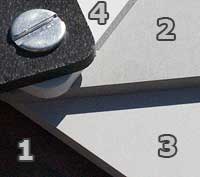 |
Each Region at 100% Zoom | |||
 1 |
 2 |
 3 |
 4 |
|
Note how noise becomes less pronounced as the tones become brighter. Brighter regions have a stronger signal due to more light, resulting in a higher overall SNR. This means that images which are underexposed will have more visible noise — even if you brighten them up to a more natural level afterwards. On the other hand, overexposed images will have less noise and can actually be advantageous, assuming that you can darken them later and that no region has become solid white where there should be texture (see "Understanding Histograms, Part 1").
Noise is also composed of two elements: fluctuations in color and luminance. Color or "chroma" noise is usually more unnatural in appearance and can render images unusable if not kept under control. The example below shows noise on what was originally a neutral grey patch, along with the separate effects of chroma and luminance noise.
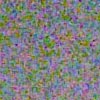 Image Noise |
 |
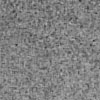 Luminance Noise |
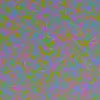 Chroma Noise |
The relative amount of chroma and luminance noise can vary significantly from one camera model to another. Noise reduction software can be used to selectively reduce both chroma and luminance noise, however complete elimination of luminance noise can result in unnatural or "plasticy" looking images.
Noise fluctuations can also vary in both their magnitude and spatial frequency, although spatial frequency is often a neglected characteristic. The term "fine-grained" was used frequently with film to describe noise whose fluctuations occur over short distances, which is the same as having a high spatial frequency. The example below shows how the spatial frequency can change the appearance of noise.
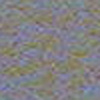 Low Frequency Noise
Low Frequency Noise(Coarser Texture)
Standard Deviation: 11.7
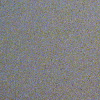 High Frequency Noise
High Frequency Noise(Finer Texture)
Standard Deviation: 12.5
If the two patches above were compared based solely on the magnitude of their fluctuations (as is done in most camera reviews), then the patch on the right would seem to have higher noise. Upon visual inspection, the patch on the right actually appears to be much less noisy than the patch on the left. This is due entirely to the spatial frequency of noise in each patch.
Even though noise's spatial frequency is under emphasized, its magnitude still has a very prominent effect. The next example shows two patches which have different standard deviations, but the same spatial frequency.
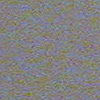 Low Magnitude Noise
Low Magnitude Noise(Smoother Texture)
Standard Deviation: 11.7
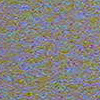 High Magnitude Noise
High Magnitude Noise(Rougher Texture)
Standard Deviation: 20.8
Note how the patch on the left appears much smoother than the patch on the right. High magnitude noise can overpower fine textures such as fabric or foliage, and can be more difficult to remove without over softening the image. The magnitude of noise is usually described based on a statistical measure called the "standard deviation," which quantifies the typical variation a pixel will have from its "true" value. This concept can also be understood by looking at the histogram for each patch:
| Select noise magnitude: | LOW | HIGH |
 |
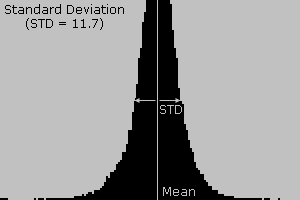 |
|
| RGB Histogram | ||
If each of the above patches had zero noise, all pixels would be in a single line located at the mean. As noise levels increase, so does the width of this histogram. We present this for the RGB histogram, although the same comparison can also be made for the luminosity and individual color histograms. For more information on types of histograms, please see: "Understanding Histograms: Luminosity and Color."
EXAMPLES
It is helpful to experiment with your camera so you can get a feel for how much noise is produced at a given ISO setting. The examples below show the noise characteristics for three different cameras against an otherwise smooth grey patch.
| ISO 100 | ISO 200 | ISO 400 | |
| Canon EOS 20D Pixel Area: 40 µm2 Released in 2004 |
 |
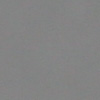 |
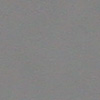 |
| Canon PowerShot A80 Pixel Area: 9.3 µm2 Released in 2003 |
 |
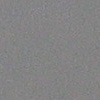 |
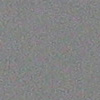 |
| Epson PhotoPC 800 Pixel Area: 15 µm2 Released in 1999 |
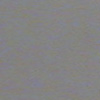 |
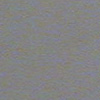 |
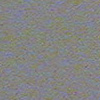 |
| Show Channel: | RED | GREEN | BLUE | ALL |
(best JPEG quality, daylight white balance and default sharpening)
Note the differences due to camera model, color channel and ISO speed. Move your mouse over the buttons below to see that each individual channel has quite a different amount of noise. The blue and green channels will usually have the highest and lowest noise, respectively, in digital cameras with Bayer arrays (see "Understanding Digital Sensors"). Also note how the Epson develops patches of color which are much more objectionable than noise caused only by brightness fluctuations.
You can also see that increasing ISO speed always produces higher noise for a given camera, however noise variation between cameras is more complex. The greater the area of a pixel in the camera sensor, the more light gathering ability it will have — thus producing a stronger signal. As a result, cameras with physically larger pixels will generally appear less noisy since the signal is larger relative to the noise. This is why cameras with more megapixels packed into the same sized camera sensor will not necessarily produce a better looking image. On the other hand, a stronger signal does not necessarily lead to lower noise since it is the relative amounts of signal and noise that determine how noisy an image will appear. Even though the Epson PhotoPC 800 has much larger pixels than the Canon PowerShot A80, it has visibly more noise — especially at ISO 400. This is because the much older Epson camera had much higher internal noise levels caused by less sophisticated electronics.
Part 1 of this tutorial can be found at: "Image Noise: Concept and Types"
